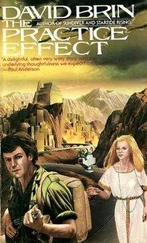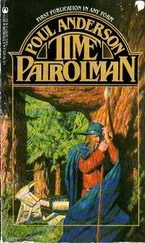Ronald J. Anderson - The Practice of Engineering Dynamics
Здесь есть возможность читать онлайн «Ronald J. Anderson - The Practice of Engineering Dynamics» — ознакомительный отрывок электронной книги совершенно бесплатно, а после прочтения отрывка купить полную версию. В некоторых случаях можно слушать аудио, скачать через торрент в формате fb2 и присутствует краткое содержание. Жанр: unrecognised, на английском языке. Описание произведения, (предисловие) а так же отзывы посетителей доступны на портале библиотеки ЛибКат.
- Название:The Practice of Engineering Dynamics
- Автор:
- Жанр:
- Год:неизвестен
- ISBN:нет данных
- Рейтинг книги:3 / 5. Голосов: 1
-
Избранное:Добавить в избранное
- Отзывы:
-
Ваша оценка:
- 60
- 1
- 2
- 3
- 4
- 5
The Practice of Engineering Dynamics: краткое содержание, описание и аннотация
Предлагаем к чтению аннотацию, описание, краткое содержание или предисловие (зависит от того, что написал сам автор книги «The Practice of Engineering Dynamics»). Если вы не нашли необходимую информацию о книге — напишите в комментариях, мы постараемся отыскать её.
The Practice of Engineering Dynamics — читать онлайн ознакомительный отрывок
Ниже представлен текст книги, разбитый по страницам. Система сохранения места последней прочитанной страницы, позволяет с удобством читать онлайн бесплатно книгу «The Practice of Engineering Dynamics», без необходимости каждый раз заново искать на чём Вы остановились. Поставьте закладку, и сможете в любой момент перейти на страницу, на которой закончили чтение.
Интервал:
Закладка:
10 1Figure A.1 Figure A.2 Figure A.3 Figure A.4 Figure A.5 Figure A.6 Figure A.7 Figure A.8 Figure A.9 Figure A.10 Figure A.11 Figure A.12 Figure A.13 Figure A.14 Figure A.15 Figure A.16 Figure A.17 Figure A.18 Figure A.19 Figure A.20 Figure A.21 Figure A.22 Figure A.23
11 2Figure B.1 Parallel axis theorem.
12 4Figure D.1 Three data points and two least squares curve fits.
Guide
1 Cover
2 Table of Contents
3 Begin Reading
Pages
1 iv
2 5
3 xi
4 xii
5 xiii
6 xv
7 1
8 3
9 4
10 5
11 6
12 7
13 8
14 9
15 10
16 11
17 12
18 13
19 14
20 15
21 16
22 17
23 18
24 19
25 20
26 21
27 22
28 23
29 24
30 25
31 26
32 27
33 28
34 29
35 30
36 31
37 32
38 33
39 34
40 35
41 36
42 37
43 38
44 39
45 40
46 41
47 42
48 43
49 44
50 45
51 46
52 47
53 48
54 49
55 50
56 51
57 52
58 53
59 55
60 56
61 57
62 58
63 59
64 60
65 61
66 62
67 63
68 64
69 65
70 66
71 67
72 68
73 69
74 70
75 71
76 72
77 73
78 74
79 75
80 77
81 79
82 80
83 81
84 82
85 83
86 84
87 85
88 87
89 88
90 89
91 90
92 91
93 92
94 93
95 94
96 95
97 96
98 97
99 98
100 99
101 100
102 101
103 102
104 103
105 104
106 105
107 107
108 108
109 109
110 110
111 111
112 112
113 113
114 114
115 115
116 116
117 117
118 118
119 119
120 120
121 121
122 122
123 123
124 124
125 125
126 126
127 127
128 128
129 129
130 130
131 131
132 132
133 133
134 134
135 135
136 136
137 137
138 138
139 139
140 140
141 141
142 142
143 143
144 144
145 145
146 146
147 147
148 148
149 149
150 150
151 151
152 152
153 153
154 154
155 155
156 156
157 157
158 158
159 159
160 160
161 161
162 162
163 163
164 164
165 165
166 166
167 167
168 168
169 169
170 170
171 171
172 172
173 173
174 174
175 175
176 176
177 177
178 178
179 179
180 180
181 181
182 182
183 183
184 184
185 185
186 186
187 187
188 188
189 189
190 190
191 191
192 192
193 193
194 194
195 195
196 196
197 197
198 198
199 199
200 200
201 201
202 202
203 203
204 204
205 205
206 207
207 208
208 209
209 210
210 211
211 213
212 214
213 215
214 216
215 217
216 218
217 219
218 220
219 221
220 222
221 223
222 224
The Practice of Engineering Dynamics
Ronald J. Anderson
Queen's University
Kingston, Canada

This edition first published 2020
© 2020 John Wiley & Sons Ltd
All rights reserved. No part of this publication may be reproduced, stored in a retrieval system, or transmitted, in any form or by any means, electronic, mechanical, photocopying, recording or otherwise, except as permitted by law. Advice on how to obtain permission to reuse material from this title is available at http://www.wiley.com/go/permissions.
The right of Ronald J. Anderson to be identified as the author of this work has been asserted in accordance with law.
Registered Offices
John Wiley & Sons, Inc., 111 River Street, Hoboken, NJ 07030, USA
John Wiley & Sons Ltd, The Atrium, Southern Gate, Chichester, West Sussex, PO19 8SQ, UK
Editorial Office
The Atrium, Southern Gate, Chichester, West Sussex, PO19 8SQ, UK
For details of our global editorial offices, customer services, and more information about Wiley products visit us at www.wiley.com.
Wiley also publishes its books in a variety of electronic formats and by print‐on‐demand. Some content that appears in standard print versions of this book may not be available in other formats.
Limit of Liability/Disclaimer of Warranty
In view of ongoing research, equipment modifications, changes in governmental regulations, and the constant flow of information relating to the use of experimental reagents, equipment, and devices, the reader is urged to review and evaluate the information provided in the package insert or instructions for each chemical, piece of equipment, reagent, or device for, among other things, any changes in the instructions or indication of usage and for added warnings and precautions. While the publisher and authors have used their best efforts in preparing this work, they make no representations or warranties with respect to the accuracy or completeness of the contents of this work and specifically disclaim all warranties, including without limitation any implied warranties of merchantability or fitness for a particular purpose. No warranty may be created or extended by sales representatives, written sales materials or promotional statements for this work. The fact that an organization, website, or product is referred to in this work as a citation and/or potential source of further information does not mean that the publisher and authors endorse the information or services the organization, website, or product may provide or recommendations it may make. This work is sold with the understanding that the publisher is not engaged in rendering professional services. The advice and strategies contained herein may not be suitable for your situation. You should consult with a specialist where appropriate. Further, readers should be aware that websites listed in this work may have changed or disappeared between when this work was written and when it is read. Neither the publisher nor authors shall be liable for any loss of profit or any other commercial damages, including but not limited to special, incidental, consequential, or other damages.
Library of Congress Cataloging‐in‐Publication data
Names: Anderson, Ron J. (Ron James), 1950- author.
Title: The practice of engineering dynamics / Ronald J Anderson, Queen's
University, Kingston, Canada.
Description: First edition. | Hoboken, NJ, USA : John Wiley & Sons, Inc.,
[2020] | Includes bibliographical references and index.
Identifiers: LCCN 2020004354 (print) | LCCN 2020004355 (ebook) | ISBN
9781119053705 (hardback) | ISBN 9781119053682 (adobe pdf) | ISBN
9781119053699 (epub)
Subjects: LCSH: Machinery, Dynamics of. | Mechanics, Applied.
Classification: LCC TJ170 .A53 2020 (print) | LCC TJ170 (ebook) | DDC
620.1/04‐‐dc23
LC record available at https://lccn.loc.gov/2020004354
LC ebook record available at https://lccn.loc.gov/2020004355
Cover Design: Wiley
Cover Image: © kovop58/Shutterstock
To June, Stacey, and Kate
Preface
The design of a mechanical system very often includes a requirement for dynamic analysis. During the early concept design stages it is useful to create a mathematical model of the system by deriving the governing equations of motion. Then, simulations of the behavior of the system can be produced by solving the equations of motion. These simulations give guidance to the design engineers in choosing parameter values in their attempt to create a system that satisfies all of the performance criteria they have laid out for it.
Читать дальшеИнтервал:
Закладка:
Похожие книги на «The Practice of Engineering Dynamics»
Представляем Вашему вниманию похожие книги на «The Practice of Engineering Dynamics» списком для выбора. Мы отобрали схожую по названию и смыслу литературу в надежде предоставить читателям больше вариантов отыскать новые, интересные, ещё непрочитанные произведения.
Обсуждение, отзывы о книге «The Practice of Engineering Dynamics» и просто собственные мнения читателей. Оставьте ваши комментарии, напишите, что Вы думаете о произведении, его смысле или главных героях. Укажите что конкретно понравилось, а что нет, и почему Вы так считаете.












